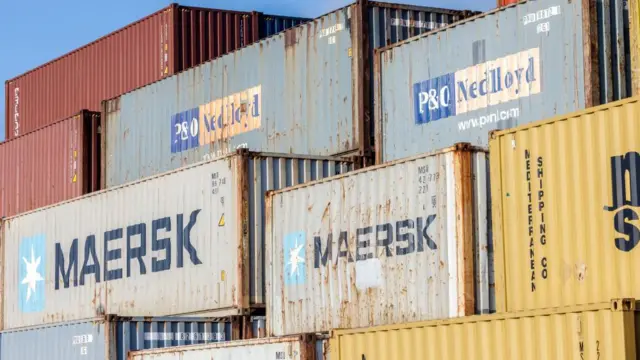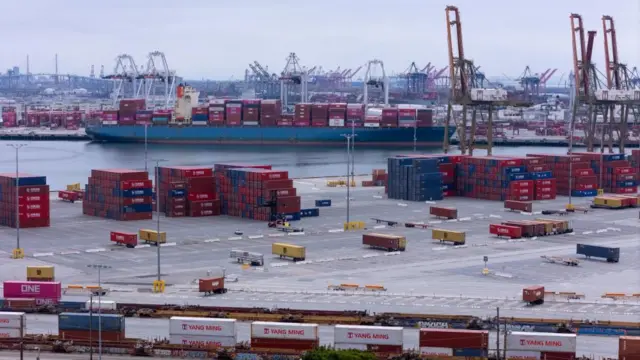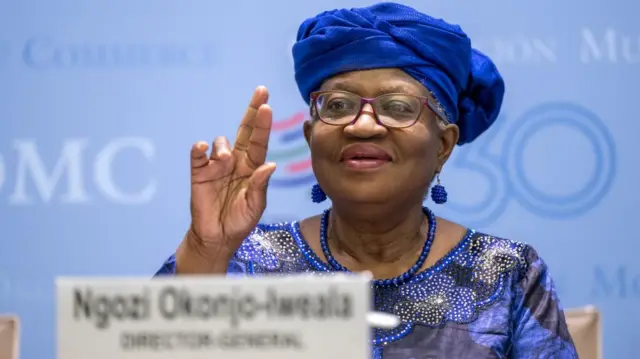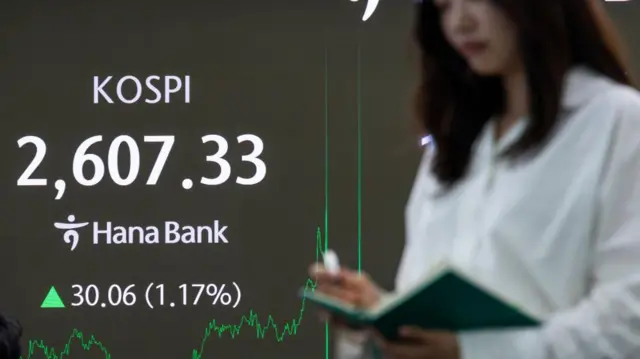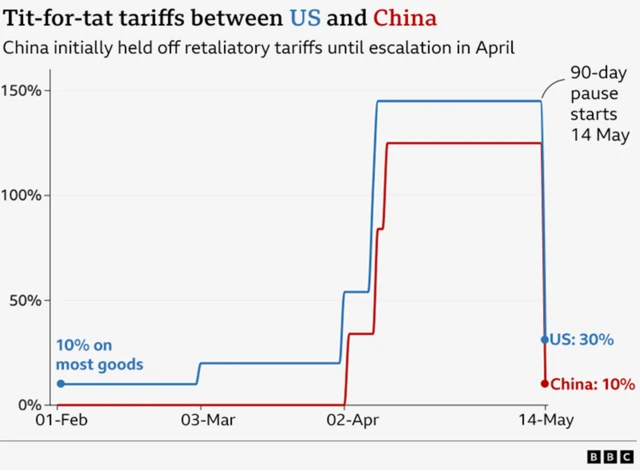US markets surge following US-China agreementpublished at 14:39 British Summer Time 12 MayBreaking
The bell has sounded on Wall Street and trading in the world's biggest economy is now open.
Here's where the three main indexes are on opening:
- S&P 500 - up 2.6%
- Nasdaq - up 3.3%
- Dow Jones - up 2.5%


